Unless you’re fairly brave and love being in thick traffic, you’re probably not going to choose to drive around the “Venice of the East.” Thankfully, there are many options for transportation in Bangkok, and most of them are downright cheap.
Taxis
Bangkok taxi drivers have a well-earned reputation. It is law that they use the meter, but many of them will ignore that and refuse to take you if you insist on the meter. It is worth insisting on the meter, though.
This is our 3rd time dealing with transportation in Bangkok, and taxis have been my greatest source of frustration. The amount they want to overcharge you can be anywhere from 2-10 times more than the metered fare. This can easily represent an overage of $8 or more.
Advice varies. Often I’ve been told the green & yellow taxis are more reliable with using the meter. However, I’ve had more luck with the hot pink taxis than any of the other colored taxis, which is kind of ironic since I absolutely despise the Pepto-Bismol shade of pink.
When we first arrived in Bangkok by train, we went through 12 taxis before finding one that would turn on the meter. The other 11 drivers attempted to get everywhere from 6-10 times what the meter ended up showing. This continued throughout most of our first stay. On our 3rd arrival, we came by train yet again. This time the 1st taxi I flagged turned the meter on. Of course, the police were standing right there so that might have had something to do with it.
Still, I’ve taken the taxis a few times since, and this time has been much easier. Here are some general guidelines:
- You’ll generally have an easier time if you hail a cab in motion. The ones sitting at curbside are less inclined to use the meter. Having said that, if there is a uniformed person directing a taxi queue, you can tell this person you want the meter, and they’ll tell the driver in Thai. It makes thing easier.
- On the lower part of the passenger-side windshield you’ll notice a small black box. If there is a red LED character lit, the taxi is registered on the system. This increases the likelihood that they’ll use the meter.
- Don’t discuss using the meter until you’re sitting in the cab. Get in, tell them the destination, and wait. If they don’t offer you a rate, they’re probably going to use the meter. If they don’t, however, wait until they’re in motion and remind them to turn the meter on.
- In most cities, the advice is to take a picture of their taxi’s ID or license. In Bangkok, that’s not a good idea. Apparently, some people have had nearly violent responses to this. If you’re going to take a photo, do it discretely. Otherwise, just write the number down. It will be on the license plate as well as some small plates in the passenger areas inside the cab.
- Unless you’re going a short distance, and there are more than 2 of you, the BTS SkyTrain will usually be cheaper. Most rides on the SkyTrain will cost around 30-45 THB per person.
- If a taxi driver wishes to use the express highway, they will usually tell you. That’s their way of asking you if it’s okay because you will have to pay those fees en route (on top of the metered rate). The tolls are usually around 45 THB (about $1.50). Going from near downtown to the airport will require about 2 tolls. From the train station, it’s one. If you don’t wish to pay the tolls, tell them “no express.” Although with Bangkok’s traffic, you’ll probably want to take the express.
- Many of the drivers have limited English. If you’re going somewhere that isn’t a major tourist destination or a very popular hotel, it’s a good idea to look up the place on Google Maps and take a photo of the Thai characters for them. Also make note of the district it’s in (often the same name as the nearest BTS station).
- Generally speaking, a taxi around town will cost between 50 and 100 THB, but obviously that will be increased for really far distances. Often the driver will just refuse to take you if it’s too far. They probably aren’t trying to be jerks. It just may not be financially practical for them. Sometimes you’ll need a combination of BTS and taxi to get to a location.
- Note that if you grab a taxi at the airport to go into town, you may be assessed an extra 50 THB fee. This is valid as they’re charged a surcharge. One way to get around this is to go to the departure area and grab one of the cabs dropping someone off. They won’t have the surcharge.
Tuk-tuks
These are motorcycle-powered modes of transportation. They tend to be worse to deal with than even taxi drivers, and there is no meter system for tuk-tuks. Generally, it isn’t advised to take them except for extremely short distances. A big reason for this is the amount of car pollution you’re exposed to while they navigate traffic. They are also often more expensive than taxis.
Motorcyle taxi
These are used for very short distances. They usually set up shop near BTS stations and other places that receive a lot of foot traffic. They are often located under awnings, and the drivers wear an orange vest. To take this mode of transportation, you hop on the back of the motorcycle or scooter while the driver weaves through traffic. Fares usually start at around 20 THB. If you’re someone who is a bit more on the nervous side, I wouldn’t recommend taking this type of taxi.
BTS SkyTrain
The SkyTrain is an elevated train that runs through a large portion of the most popular areas of Bangkok. It’s a very modern system that is nicely air conditioned. In fact, it can even be downright chilly. Here is one of the best route maps I’ve found. Trains begin service at 6 AM, and most run until just after midnight.
Most routes will cost between 30-45 THB. Children under 90 cm tall are free and need to be carried through the automated gate. Over that height they pay full fare. A 1-day pass is available for 130 THB (purchase at the ticket counter). You can use their interactive map to determine the approximate time of travel and the fare per person for your specific travel situation.
Generally, to get a ticket you’ll want to use the machines. BTS has a great tutorial on their website. If you need coins, go to the ticket window and tell them how much you need for your fare and give them the paper money. They’ll give you back the necessary coins.
Once you’ve used the card to enter the gate, make sure you hold onto it. You’ll need it when you exit. The automatic gate will retain the card upon exit. Yay for recycling! Transfers are included in the fare.
If your exit is next to a large shopping center or other popular destination, there will usually be a specific one which provides a convenient walkway. As you exit the platform, you’ll usually find a local map directly in front of you at the bottom of the stairs. These are super helpful in selecting the correct exit.
MRT
This is Bangkok’s underground metro system, and it runs from 6 AM to midnight. It covers areas that the BTS doesn’t. When you view the combined BTS and MRT route map, the MRT lines are in dark blue.
A single journey will cost between 16 and 40 THB. The MRT considers anyone under age 14 and under 120 cm as a child, and their rate is 50% of the adult fare.
River taxis
This is a really fun way to get around parts of Bangkok, especially the really popular areas like some of the big temples. the Grand Palace, Chinatown, etc. The central pier is easily accessible by the BTS SkyTrain. The river taxis can extend north of the city into some of the areas less frequented by tourists.
The cheaper public boats each fly a specific colored flag to let you know their route. There is a map at each pier so that you can determine which flagged boat you will need. Keep in mind that different colored routes may only run during part of the day. The orange route is your best bet as it runs all day (6 AM to 19:00/7 PM) and stops at most places. The boats that are unflagged may refuse foreigners. I’m not sure why. Most sources don’t recommend the “no flag” boats anyway as they operate more sporadically and are often slower.
Different routes have different fares, but most are 20 THB or less. The tourist boat charges 40 THB, and there is a one-day pass available for 150 THB.
- You have to get through the seemingly endless array of touts to get to the pier. Some of them will tell you the orange line isn’t running or won’t stop at that pier. That is usually a lie. Ignore them and keep walking until you’re in the queue for the boat. Most of them are selling tours that are far more expensive than the route you’re choosing. For example, today we were quoted 500 THB by someone even though I told them “no tour.” The actual fare for the public boat was 15 THB per person. You could easily work out your own river tour by using the public boats for far less. Even the tourist boat only charges 150 THB for the entire day.
- Do NOT pay at a ticket window or anywhere else for the public boats (yellow and orange lines). You pay on the boat (and they’ll make change for you as long as the bill isn’t too large). The blue line is a tourist boat, and you will often pay for that at a ticket window that has appropriate signage.
- Sometimes they will call out the name of the next pier, but don’t count on it. Each pier has a number, so it’s wise to keep count of them as not every pier’s number is visible from the boat. When you are getting close to your stop, make sure you line up at the back of the boat so they know you want to disembark at the next station. Otherwise, they may not stop.
- The person collecting the fares will walk around with a metal tube filled with coins. They shake it as they walk. Just signal to them, and they’ll stop by to collect your fare and give you a ticket. You won’t need this ticket after you leave the boat, but you may want to hold onto it until you’ve disembarked just in case you need to prove you paid.
Conclusion
The above information may seem like a lot, but most situations are quite intuitive and simple. The river taxi stations are probably the most daunting if you are unprepared because of the chaos of the crowds and all the people trying to sell you stuff, but once you’ve managed to get on and off your first boat, it’s really quite easy.
Now you can sort out transportation in Bangkok like a pro!
Do you have any other tips to add? Would love your comments.

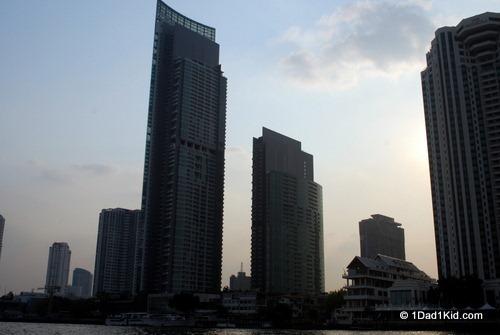
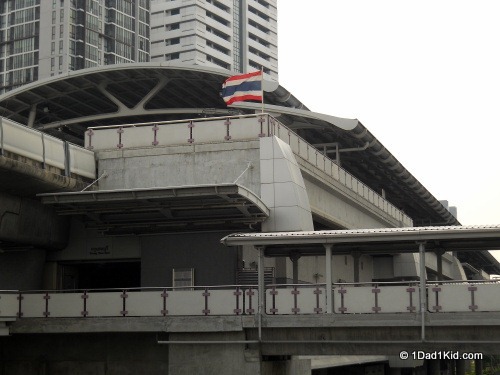
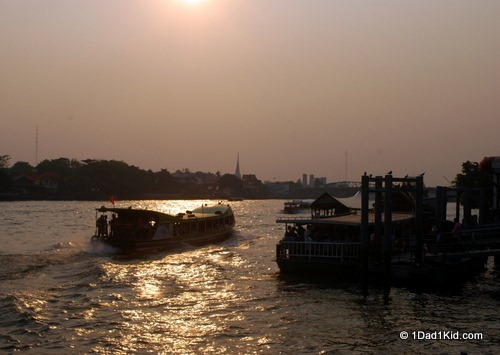
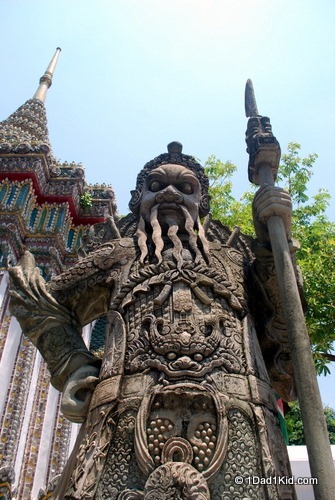
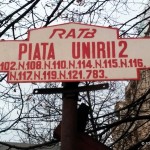
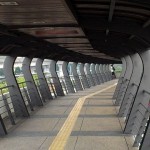
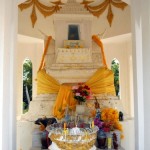

April 21, 2013
Great post with loads of useful information! Unfortunately (as I love a good metro map), the link you put to the “best route map” you found seems to be broken. Just so you know!
April 21, 2013
Thanks! Glad you found it helpful. Thanks for letting me know about the link. One of those things where it works just fine on your own computer but not on someone else’s! Repaired now. 🙂
April 20, 2013
Good tip about getting in a taxi before saying the destination. The amount of times I’ve had my head inside the vehicle, bum sticking out towards the pavement, showing the driver a photo of a map taken on my iPod only to be told ‘no meter’ is ludicrous.
April 20, 2013
Unfortunately, I can empathize with you! Hope my tip helps.
April 20, 2013
I have always associated Bangkok with horrendous traffic and had not considered that there may be other transport options! Thanks for all the helpful advice. We’re hoping to get there one day so I’ll book mark this for future reference!!
April 20, 2013
Horrendous traffic and Bangkok do go hand in hand. That’s for sure! I hope you do make it out here. It’s really an interesting city.
April 20, 2013
Great post – what about tuk tuks though? Did you use them at all? Often it’s too tiring to bargain for a price and taxis regularly work out cheaper. A tuk tuk is fun for a quick trip though 🙂
April 20, 2013
Thanks for reminding me about them! I’ve went ahead and updated the post.
I don’t usually do them because of the pollution exposure, the cost, and the frustration of haggling with them.
April 19, 2013
That’s kind of funny. How did you get seasick? On the floating pier?
April 19, 2013
The only city I ever got seasick in 🙂
Great advice.